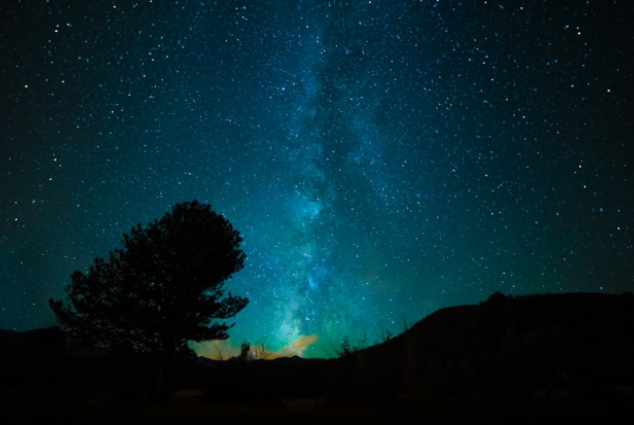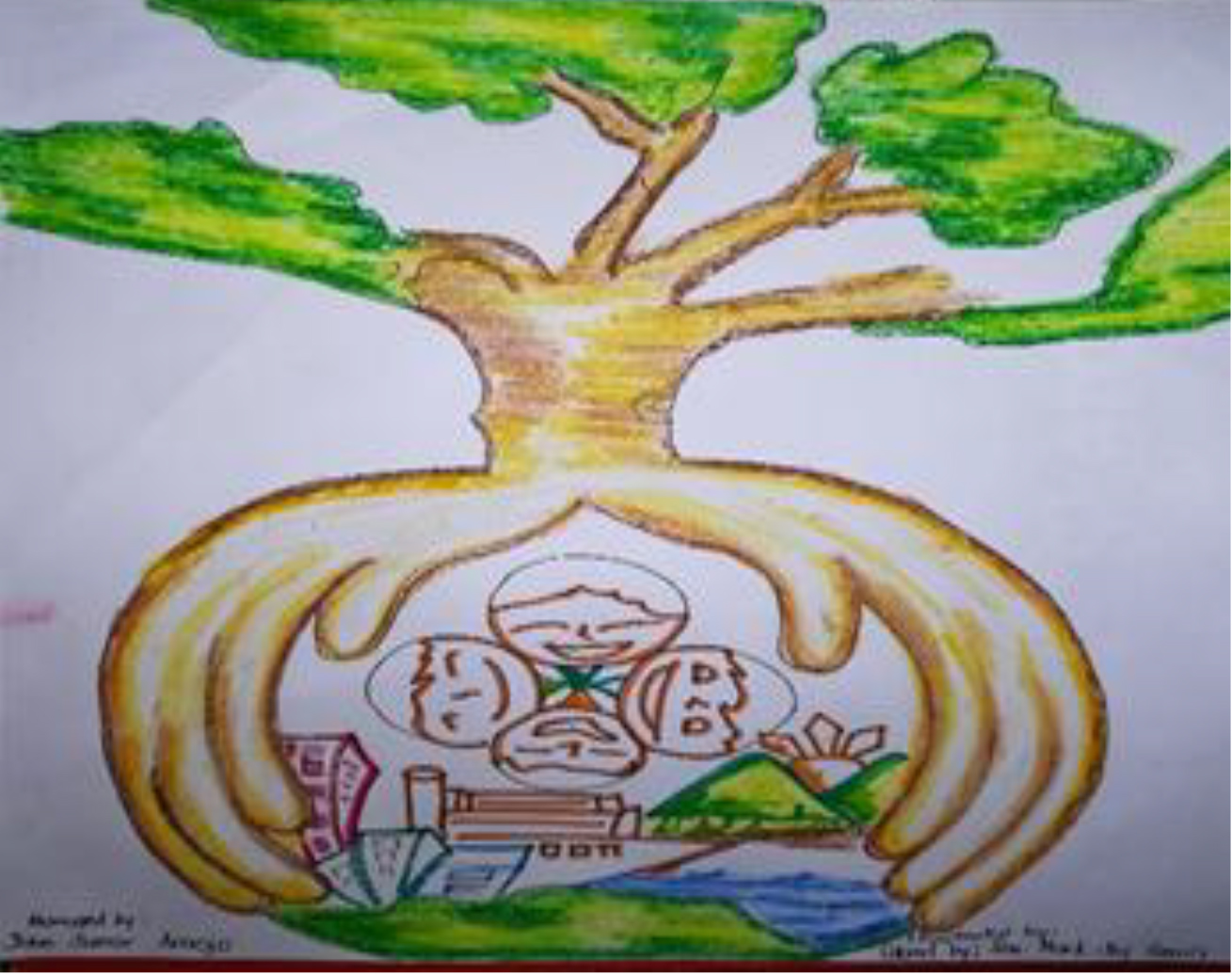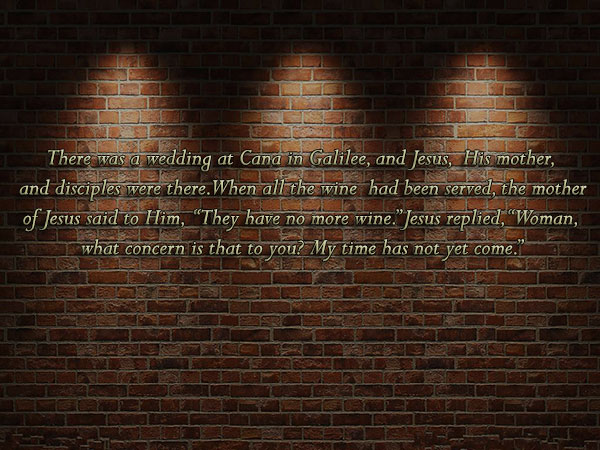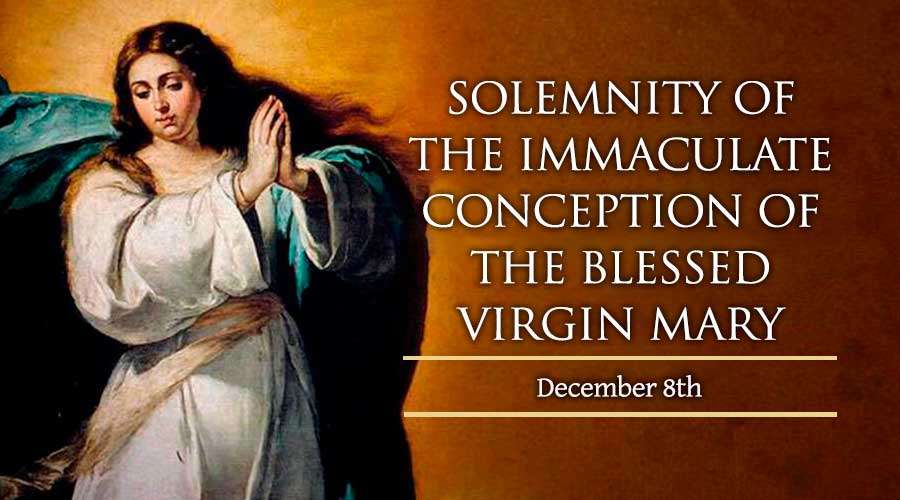
When Christ became human, he also became part of the vast body of the cosmos.
In our day concerns about ecology are rising. Climate change, pollution, and extinction of plant and animal species make us question harmful human treatment of the natural world.
One religious response has been to focus on the doctrine of creation. Since the whole world was created by God, who saw it was “very good” (Gen. 1:31), nature—sky, sea, land, and the creatures that dwell there—has great value in God’s eyes. Human beings, created in the divine image and likeness, are part of this community of life. We are put in the garden to till and care for it (Gen. 2:15), not destroy it.
For Christians, Jesus Christ is the center of faith, the ground of the church’s belief and practice lived out in his Spirit. If love for him can be connected with love for nature, a strong impulse for ecological care will result, in addition to the doctrine of creation. Does Jesus have anything to do with the cosmos? Exploring his incarnation, ministry, death, and resurrection with this question in mind yields some inspiring and challenging answers.
Made of stardust
At the core of Christian faith is the truth that in Jesus Christ God became a human being to redeem the world. The gospel for Christmas day proclaims this beautifully: “The Word was made flesh and dwelt among us” (John 1:14). The Word is God’s own self-communication, uttered from all eternity. Flesh means what is material, perishable, vulnerable, finite, the very opposite of what is divine.
Here is a most radical statement: God became material. Christmas celebrates a radical gift: The all-holy God personally joined our world of sin and suffering to save. This is known as the doctrine of incarnation, from the Latin in carne, “into flesh.”
Scientific discoveries have made clear that human flesh is part of the evolutionary network of life on this planet, which in turn is a part of the solar system, which in turn came into being as a part of a long cosmic history. This awareness of our natural history provides new insight into the cosmic meaning of the “flesh” that the Word became.
The prevailing theory in science today holds that everything that exists comes from a single blazing instant. Dated at 13.7 billion years ago, the universe began when a single speck exploded in what is rather inelegantly called the Big Bang, an outpouring of matter and energy that is still going on.
As this material expanded, its lumpy unevenness allowed swirling galaxies to form as the force of gravity pulled particles together and their dense friction ignited the stars.
Roughly 5 billion years ago some of these aging stars died. They exploded into great supernovas, which cooked basic hydrogen into more complex elements. Out of these clouds of dust and gas, some material reformed and re-ignited to become our sun, a second-generation star. Some coalesced into chunks too small to catch fire, forming the planets of our solar system—including Earth.
Three and a half billion years ago on this planet another momentous change took place when molecules coalesced to form living cells. Over eons these burst into creatures that would “be fruitful and multiply”: the advent of life.
Out of the Big Bang, the stars; out of the stardust, the Earth; out of the matter of the Earth, life. Out of the life and death of single-celled creatures, an advancing tide: trilobites, fish, amphibians, insects, flowers, birds, reptiles, and mammals, among whom emerged human beings—mammals with brains so complex that we experience self-conscious intelligence and freedom.
According to this scientific story, everything is connected with everything else. British scientist and theologian Arthur Peacocke explains, “Every atom of iron in our blood would not be there had it not been produced in some galactic explosion billions of years ago and eventually condensed to form the iron in the crust of the Earth from which we have emerged.”
Quite literally, human beings are made of stardust.
Furthermore, we share with all other living creatures on our planet a common genetic ancestry. Bacteria, worms, pine trees, blueberries, horses, the great gray whales—we are all genetic kin in the great community of life.
While human thought and love are distinct, they are not something injected into the universe from without. Rather, they are the flowering in us of deeply cosmic energies. In the human species nature becomes conscious of itself and open to fulfillment in grace and glory.
According to the Jewish philosopher Abraham Heschel, this makes human beings the “cantors of the universe,” able to sing praise and thanks in the name of all the rest.
Understanding the human species as an intrinsic part of planetary and cosmic matter has far-reaching implications for the meaning of incarnation. In this perspective, the human flesh that the Word became is part of the vast body of the cosmos.
Theologians have started to use the phrase “deep incarnation,” coined by Danish theologian Niels Gregersen, to express this radical divine reach into the very tissue of biological existence and the wider system of nature.
Like all human beings, Jesus carried within himself what Jesuit Father David Toolan has called “the signature of the supernovas and the geology and life history of the Earth.” The genetic structure of his cells made him part of the whole community of life that descended from common ancestors in the ancient seas. The flesh that the Word became thus reaches beyond Jesus and other human beings to encompass the whole biological world of living creatures and the cosmic dust of which we are composed.
This “deep” way of reflecting on the incarnation provides an important insight. By becoming flesh the Word of God confers blessing on the whole of earthly reality in its material dimension, and beyond that, on the cosmos in which the Earth exists. Rather than being a barrier that distances us from the divine, this material world becomes a sacrament that can reveal divine presence. In place of spiritual contempt for the world, we ally ourselves with the living God by loving the whole natural world, part of the flesh that the Word became.
Earthy Jesus
For someone later revered as a spiritual savior, Jesus’ ministry showed a profound connection with bodiliness and the earth. Preached within a farming culture, his parables are salted with references to seeds and harvests, vineyards and weeds, rain and sunsets, sheep and nesting birds. He did not hesitate to speak movingly of God’s clothing the wildflowers with beauty. He even told of his dear Father’s concern for a dead sparrow fallen to the ground (Matt. 10:29).
Jesus’ actions, too, were remarkably physical. His healings placed people’s bodily suffering at the center of attention; he used his own spittle and warm touch to convey health. And how he fed people! Large numbers on hillsides and smaller groups in homes, where he was copious host and table companion, all knew his concern to satisfy their bodily hunger.
Central to both preaching and deeds was Jesus’ conviction that the kingdom of God is near. This rich Jewish symbol points to the moment when God finally reigns over the powers of darkness, so that the divine will is done on earth as it is in heaven. Jesus’ ministry discloses concretely what this means: nothing less than salvation, the end of sin and suffering and death, the flourishing of all creatures.
This includes their physical dimension, for as the gospel stories show, bodies matter to God—all bodies, not only those beautiful and full of life but also those damaged, violated, starving, dying; and not only those of humankind but also those of the rest of creation.
Ecological theologian Sallie McFague summarizes what Christ’s ministry reveals in a pithy axiom: “Liberating, healing, and inclusive love is the meaning of it all.” Love, as Jesus enfleshed and enacted it, is the meaning encoded at the heart of the universe itself. The loving God’s original and ultimate intent is fullness of life—not just for a slice of the world—but for all, including poor human beings and all living creatures.
For disciples who follow his “Way,” Jesus’ ministry grounds compassion for all the bodies in creation—not only those that succeed in their time but also those that are disparaged, judged unimportant or unacceptable, broken, or pushed into extinction. With this conviction, people can risk the struggle for life in a world where death due to entrenched poverty, violent injustice, and ecological insensitivity and greediness are a daily possibility for millions.
This perspective brings social justice and ecological care into a tight embrace.
Christ as the “first tomato”
The end of Jesus’ life in death and resurrection provides yet another chapter in the astonishing narrative of God’s immersion in matter. No exception to perhaps the only ironclad rule in all of nature, Jesus died, his life bleeding out in a spasm of violence.
Contemporary theology emphasizes that Christ’s suffering on Good Friday reveals God’s compassion with all who suffer throughout history. Crosses keep on being set up in the world, connecting the human race with the red thread of agony. In Christ God sympathizes and desires passionately that we take all the crucified peoples down from the cross.
This merciful solidarity is not limited to human beings alone. Nature, too, suffers: “The whole creation has been groaning in travail together until now” (Rom. 8:22). Christ’s suffering leads us to trust that the endless millennia of suffering and dying entailed in the process of evolution are accompanied by divine love. Not a sparrow falls to the ground without being embraced by the compassion of God.
Christian faith proclaims that the cross is not the final word. It blossoms into the tree of life: “He is risen, Alleluia.”
This Easter Good News has always involved bodiliness. Faith in the resurrection of Jesus Christ affirms that it is not his soul alone which is saved from death but his whole body-person-self. Starting with a humiliated body laid in a tomb, the resurrection story tells of the creative power of divine love triumphing over the crucifying power of evil and the burying power of death.
What this means in the concrete is not seriously imaginable: “We see now in a mirror only dimly” (1 Cor. 13:12). Yet the empty tomb stands as a historical marker that the love of God, stronger than death, embraces biological existence itself and rescues it from annihilation.
The exuberant joy that breaks out at Easter comes from the realization that this destiny is not meant for Jesus alone but for the whole human race. The outcome of his death signals that a blessed future awaits all who go through the shattering of death, which is everyone.
In a terrific metaphor St. Paul captures this succinctly: Christ is “the first fruits of those who have fallen asleep” (1 Cor. 15:20). If you have ever grown tomatoes, you know the joy of picking the first juicy one. But there are more ripening on the vine and their day of harvest will come. Christ, the first fruits of those who have fallen asleep, is like that first tomato!
Risen from the dead, Christ makes clear that salvation does not mean the escape of the human spirit from matter. Rather, our future will bring the transformation of our whole relational body-person-self-dust and breath together—into the glory of God.
Ecological awareness of our earthly and cosmic history impels us to extend this hope beyond its human scope to include a future for the whole natural world.
Since Jesus of Nazareth was composed of star stuff and earth stuff, and since his body existed in a network of relationships extending to the whole physical universe, his resurrection signals the beginning of the redemption, not just of other human beings, but of the whole creation itself—the whole natural world, all of matter in its endless permutations.
An early Christian hymn that praised the crucified Christ as “the first-born from the dead” also rightly declared that he is “the first-born of all creation,” including things visible and invisible (Col. 1:15-20). “In Christ’s resurrection the earth itself arose,” declared St. Ambrose, the fourth-century bishop of Milan.
The Catholic liturgy of the Easter Vigil beautifully symbolizes this with cosmic and earthly symbols of light and dark, new fire, flowers and greens, water and oil, bread and wine. The Exsultet, sung only on this night, shouts, “Exult, all creation, around God’s throne,” for Jesus Christ is risen!
The hymn continues with a call to our planet:
Rejoice, O earth, in shining splendor,
radiant in the brightness of your King!
Christ has conquered! Glory fills you!
Darkness vanishes forever!
In truth, the risen Christ embodies the ultimate hope of all creation.
Once when the famous U.S. naturalist John Muir came across a dead bear in Yosemite, he wrote a biting criticism in his journal against religious folk who make no room in heaven for such noble creatures: “Not content with taking all of Earth, they also claim the celestial country as the only ones who possess the kinds of souls for which that imponderable empire was planned.” To the contrary, Muir believed, God’s “charity is broad enough for bears.”
In the light of the risen Christ, hope of salvation for sinful, mortal human beings expands to become a cosmic hope, a shared hope. Love for the Earth and all its creatures flows as a response.
All hands on deck
Faith in Jesus Christ can provide rich resources for an ecological ethic that is critically needed at this time of Earth’s distress. In union with the love that creates and embraces all reality and is glimpsed concretely in Jesus Christ’s incarnation, ministry, death, and resurrection, we need to shape our lives in the knowledge that nature is grounded in the sacred. Salvation encompasses not just human life but all life and the whole cosmos itself.
For billions of years the universe has had the character of an adventure, discovering and bringing forth new things never seen before. And the process is not finished yet. Human action that aborts nature’s possibilities by wreaking harm to ecosystems and other creatures is nothing less than a profoundly sinful violation against life. It shortchanges nature’s promise, killing off what might yet be. In so doing, it frustrates God’s own creative vision for the future of this universe.
In the light of Christian faith, Pope John Paul II wrote, we must so shape our moral lives that “respect for life and the dignity of the human person extends also to the rest of creation.”
French Jesuit philosopher and paleontologist Pierre Teilhard de Chardin captured our moment of crisis in a well-known parable. The human race is on a ship moving through an unchartered sea. For millennia, human beings lived in the hold of the ship, unaware of the larger evolutionary processes moving the boat. Now the passengers have come above board. On the deck they see a tiller, navigational instruments, charts. They have crossed a threshold.
To an important degree, human beings are now able to speculate on the direction of the evolutionary process and even to drive the ship toward a conscious goal. Will they act responsibly and steer in a goodly ecological direction? Or will they crash the ship onto the rocks?
Belief in Jesus Christ has a great deal to contribute to a flourishing outcome, if it, too, comes up onto the deck. He is a gift given because “God so loved the world” (John 3:16). The original Greek of the word that is usually translated “world” is kosmos.
Yes, God so loved the whole blooming, buzzing, evolving, groaning cosmos that Jesus’ life, death, and resurrection connects it forever with redeeming promise.
This article appeared in the April 2010 issue of U.S. Catholic (Vol. 75, No. 4, pages 18-21).
(from US Catholic)











